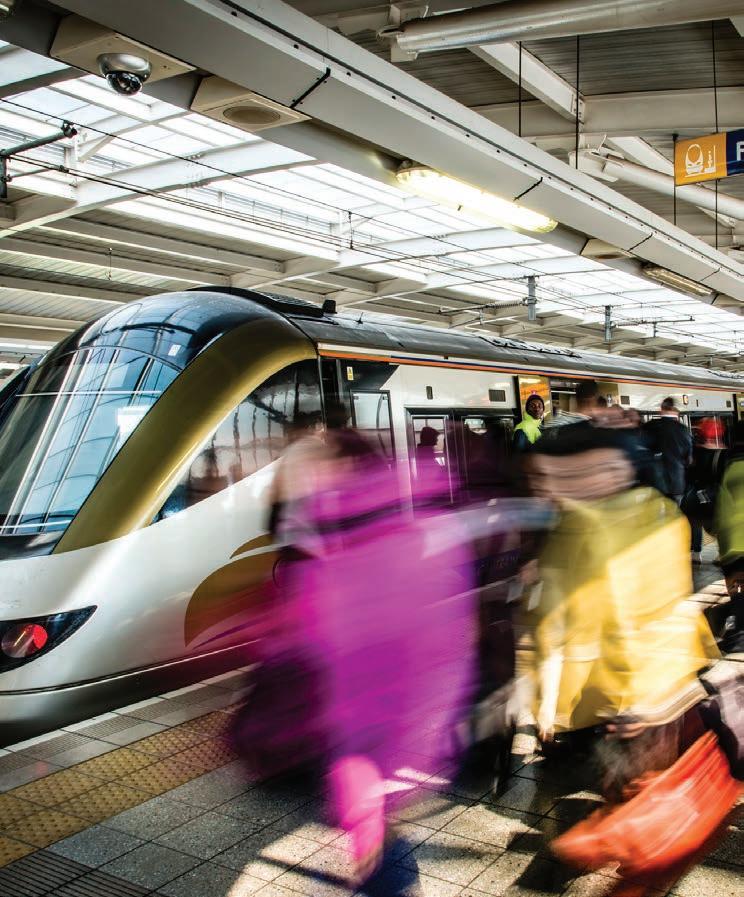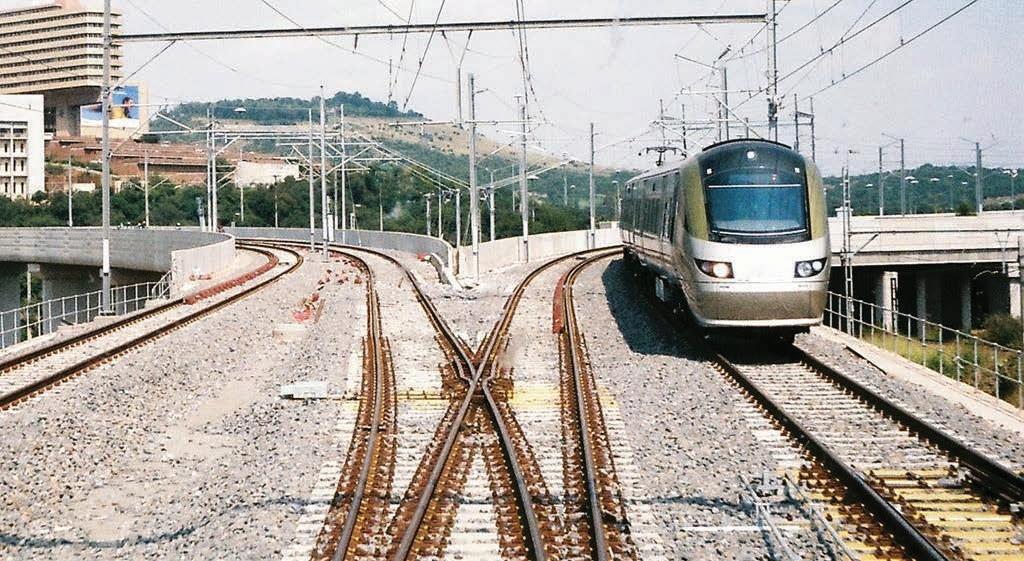
3 minute read
RAPID RAIL LINK
Johannesburg’s Ambition
Joseph Philips
Advertisement

There is arguably no greater key to Africa’s fulfilling its potential than infrastructure. Estimates vary, but the infrastructure gap in South Africa between 2022 and 2030 has been estimated at close to $300 billion. Investments of this size would be considered large in any country, but at least South Africa has an example it can point to when making a case for the effectiveness of large investments in infrastructure: Guatrain Rapid Rail Link (Guatrain).
Not only is Guatrain South Africa’s first world-class, modern rapid rail and bus service, it is also the first high-speed urban train on the continent. Its impact, as this article will show, has been immense for South Africa’s biggest city, Johannesburg, and its province. It also sets a new standard for what South Africa is looking for from its infrastructure projects. Business Excellence dropped by to take a closer inspection.
Overview
The origins of Gautrain go back to the late 1990s, when Johannesburg’s traffic was beginning to ground to a halt. At the time, World Bank statistics show, South Africa had around 70 cars per 1,000 inhabitants. In 2020, that number stood at 176. As the industrial and economic heart of the country, Johannesburg in the Gauteng province, couldn’t afford to slow
Guatrain South Africa’s first world-class, modern rapid rail and bus service

Moving beyond Transport solutions driven by a passion for mobility



The future of mobility in our globally networked world calls for seamless, sustainable, reliable, and secure mobility solutions. We’re leveraging the benefits of digitalization, engineering excellence, and our entrepreneurial spirit to master this challenge. Trusted by our partners, we’re pioneering transportation, moving people sustainably and seamlessly from the first mile to the last. And we always go the extra mile to help transport services all over the globe move beyond the expected.

down. In the year 2000, the Gautrain was conceived.
After much public planning, the outline of a project soon began to appear. In 2006, the province signed a 19-and-a-half-year contract with the Bombela Concession Company (“Bombela”), which included giants of international engineering such as Bombardier, Bouygues, Murray and Roberts, and a series of minor shareholders. Their appointment was a pivotal one: The project was delivered on time and within budget in 2010.
Gautrain is a state-of-the-art 80-kilometre mass transit system, which connects Johannesburg, Pretoria, Ekurhueni, and O.R. Tambo International Aiport

- Johannesburg’s principal passenger airport. Capable of reaching up to 160km/h, cutting the time it takes to travel from Johannesburg to Pretoria from around 75 to 35 minutes. It has an annual ridership of close to 14 million passengers.
Socioeconomic Impact
The efficiency mentioned in the previous paragraph is a game changer for the many commuters - particularly those taking more than one bus journey - into the economic epicenter of South Africa. In a study conducted by Gautrain in conjunction with the Gaunteng province in 2019, the scale of these socioeconomic benefits are quantitatively laid out. The impact includes jobs and investment, thalesgroup.com











8 billion passengers each year benefit from Thales technologies -

Search: Thalesgroup integrating previously unconnected regions, and environmental benefits.


The positive impacts include, but are not limited to the creation of 35,000 direct construction jobs and 10,900 direct operational jobs, an estimated 74 Rand in economic benefit every time a car journey is saved, approximately 12 billion Rand of salary delivered, and approximately 20.4 billion Rand contribution to GDP of Gauteng. From an environmental perspective, every commuter on the Gautrain saves an estimated 120 kilograms of C02 emissions per month.
What goes somewhat unnoticed in these headline figures, however, are the numbers that underpin them. For example, around 128 million Rand was invested to improve employee skill levels during the construction process - skills which

Solutions Are Our Strength
H&P Railservice GmbH is based in Kemeten in Burgenland. The state-of-the-art office building with attached workshop and high-bay warehouse offers enough space to handle all projects properly. The neighboring grounds are also owned by H&P Railservice GmbH and there are no limits to future expansion.
they can take into other employment. During this period, women received over 5,000 5, months of training and over 120 women participated in the Leadership and Mentoring Programme for Electrical and Mechanical Works.
Extending the Line (And the Impact)
A new expansion of the Gauteng network forms the centerpiece of a 25-year integrated transport master plan that puts rail as the backbone of South Africa’s urban transport system. The plan is timely, given that recent projections show that the number of vehicles on South African roads is set to sky rocket in the next two decades, with peak hour trips on key roads expected to take 70% longer than off-peak trips.

The expansion of Gautrain includes an investment of around 110 billion Rand on track, with 19 new stations, while a further 24.4 billion rand will be allocated to improving existing parts of the network to extend its reach to underserved areas. This will see an additional two million township residents gain access to the network, in turn unlocking more employment and education opportunities, as well as a safer and more sustainable mode of transport. It also will increase black owned companies’ participation in the rail sector


GMA CEO, William Dachs identified that “Given the delays in approvals and the detailed design and planning, as well as land rights acquisition and the environmental authorisation process, a more realistic date for construction would be the end of 2024,”


